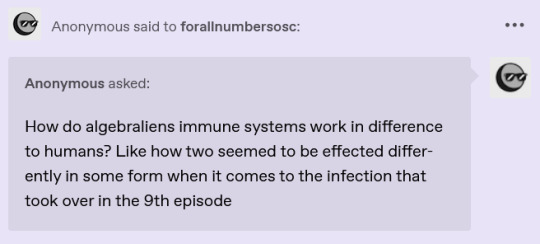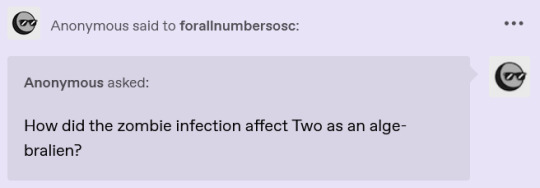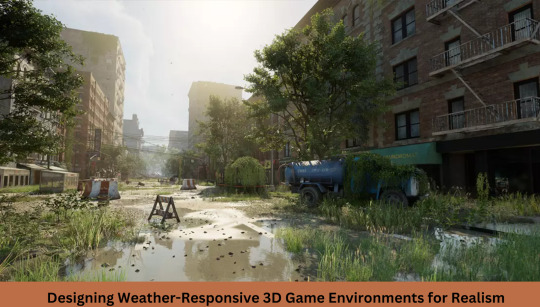#React Conditional Render using state
Explore tagged Tumblr posts
Text
Understanding React Conditional Rendering for Dynamic User Interfaces
React Conditional Rendering is a feature in React that enables developers to display different components or elements based on specific conditions. It works similar to JavaScript conditions, allowing you to perform different actions depending on the current state of your React application. By using conditional rendering, you can create dynamic and interactive user interfaces that adapt and respond to different scenarios.

What is React Conditional Rendering?
React Conditional Rendering is a powerful feature in React that allows developers to create dynamic and interactive user interfaces (UI). In the simplest terms, ‘conditional rendering in React’ refers to displaying different components or elements based on certain conditions.
Just like in JavaScript, you can use conditions in your React code to perform different actions based on different conditions. This concept is commonly referred to as ‘React conditional render’.
The Working Principle of React Conditional Rendering
React utilizes the JavaScript conditional operators like IF-ELSE, ternary, and logical AND to create ‘conditional rendering react’. React components return different elements from the render function depending on the current props and state of the application.
For instance, let’s consider a simple scenario where we want to display a welcome message to logged-in users, and a login button to those who are not logged in. Here, ‘conditional rendering in React’ comes into play. Based on the condition, whether the user is logged in or not, we instruct React what to display – the welcome message or the login button.
The Power of React Conditional Rendering
React conditional rendering multiple conditions’ is also possible, which means you can render based on more than one condition. This makes your application much more dynamic and adaptable to complex scenarios. You could render a component if the user is authenticated and if they have specific privileges, for instance.
React allows conditions to be checked multiple times before rendering certain components, often referred to as ‘react conditional rendering’. This flexibility enables greater control over complex and dynamic application states.
In conclusion, React conditional rendering is a powerful tool that developers can use to create more interactive and responsive applications, bringing a whole new level of dynamism to your React apps.
Why Conditional Rendering is Necessary in React Applications?
Conditional rendering react’ is an indispensable tool for developing dynamic, user-friendly applications. Here, we will delve into why conditional rendering is so crucial in React applications.
Enhancing User Interface with React Conditional Render
React is highly popular due to its capability to build intuitive and responsive user interfaces. This is where ‘react conditional render’ shines. By using conditional rendering in react, you can tailor the UI based on specific conditions, thereby creating a personalized user experience.
For instance, displaying user-specific data, hiding or showing navigation elements based on user roles, or toggling between light and dark modes, all these are achievable with conditional rendering.
Managing Complex Scenarios with React Conditional Rendering Multiple Conditions
React conditional rendering multiple conditions’ is an essential feature that allows developers to handle complex UI changes seamlessly. This approach offers the capability to render components based on multiple conditions, thereby bringing a whole new level of dynamism and adaptability to your applications.
For example, you may want to render a component only if a user is authenticated and holds specific privileges. This scenario requires checking multiple conditions, showcasing the power of conditional rendering in react.
Greater Control with React Conditional Rendering
The ability to check conditions multiple times before rendering a certain component, commonly referred to as ‘react conditional rendering’, offers developers greater control over the application’s UI and behavior. This proves to be especially useful when dealing with multiple dependencies that can affect the UI rendering.
Conditional Rendering for Performance Optimization
React conditional render isn’t just about UI changes. It also plays a role in optimizing application performance. By rendering only what’s necessary based on certain conditions, React apps can avoid unnecessary rendering and thus save valuable processing power, leading to smoother and faster applications.
In conclusion, conditional rendering in React is not just a handy feature; it’s essential in creating responsive, user-friendly applications. It provides developers the tools to create dynamic UIs, manage complex scenarios, optimize performance, and overall, gives them greater control over how and when components are rendered.
How does React Conditional Rendering Work?
Consider an example of how to use the sign-in/signout button. The sign-in and sign-out buttons will be separate components. If the user signs in, sign-out the component will be used to display the sign-out button. This scenario is called conditional rendering.
In react we have different ways to do Conditional rendering. They are as follows:
If/else
Ternary operator
Logical && operator
Switch case operator
Prevent rendering with null
Conditional Rendering with enum
Immediately-Invoked Function Expressions (IIFE)
Subcomponents
High Order Components (HOCs)
1) If/else
It is a simple way of rendering in react using if/else. The syntax of if/else is the same as javascript, but in react a return statement needs to be defined for each if / else declaration, which makes the code repetitive and not simple to read and modify.
import React from 'react'; class ConditionalRendering extends React.Component{ constructor(props){ super(props); this.state ={ IsLoggedIn : false } } render(){ if(this.state.IsLoggedIn){ return
Welcome User
} else{ return
You need to login
} }; } export default ConditionalRendering;
2) Ternary operator
Ternary operators can be used to replace if/else and also in cases where two blocks alternate given a certain condition.
Syntax: Condition? statement 1: statement 2
If the condition is true then statement 1 will be rendered otherwise statement 2 will be rendered
render() { const isLoggedIn = this.state.isLoggedIn; return (
Welcome {isLoggedIn ? ‘Back’ : ‘Please login first’}.
); }
3) Logical && operator
This operator is used for checking the condition. If the given condition is true, it will return the element right after &&, and if the condition is false, React will ignore and skip it.
Syntax
{ condition && // whatever written after && will be a part of output. } import React from 'react'; import ReactDOM from 'react-dom'; Function ExampleofLogocal() { return(
{ (15> 8) && alert(‘This alert will be shown!’) }
); }
4) Switch case operator
Switch case operator is used when we have multiple condition renderings. Rendering is applied based on different states.
function NotificationMsg({ text}) { switch(text) { case 'Hi All': return ; case 'Hello': return ; default: return null; } }
5) Prevent rendering with null
If you want to conceal a component, you can render its rendering method null, there is no need to render an empty element as a placeholder. One important thing to keep in mind when returning null is that even though the component doesn’t show up, its life-cycle techniques are still being fired.
renderInputField() { if(this.state.mode === 'view') { return null; } else { return (
); } }
6) Conditional Rendering with enum
An enum is used in multiple conditional rendering. It is perfect for mapping different states and more than one condition.
function NotificationMsg({ text, state }) { return (
{{ info: , warning: , }[state]}
); }
7) Immediately-Invoked Function Expressions (IIFE)
IIFEs are functions that are executed immediately after they are defined, there is no need to call them explicitly.
We have to define the function in the following way
( function myFunction(/* arguments */) { // ... }(/* arguments */) ); Or in this way ( function myFunction(/* arguments */) { // ... }(/* arguments */) );
8) Subcomponents
we use React, where the suggested methods are things such as dividing your app’s logic into as many parts as possible and using functional programming rather than imperative programming.
It would, therefore, be a great choice to move the conditional rendering logic to a sub-component that makes different things based on its props.
render () { const view = this.state.mode === 'view'; return (
Text: {this.state.text}
{ view ? : ( ) }
); }
9) High Order Components (HOCs)
A higher-order component is a function that takes a current element and returns a fresh one with some added features
function higherOrderComponent(Component) { return function EnhancedComponent(props) { if (condition) { return ; } return ; }; }
How to Manage Application State for Conditional Rendering?
The magic of ‘conditional rendering react’ lies in the management of application state. By understanding and controlling the state, we can control what components are rendered under specific circumstances. This article will provide an overview of managing application state for ‘react conditional render’.
Understanding State in Conditional Rendering in React
State in React is a built-in feature that allows components to create and manage their data. This data can influence what is rendered in the UI. When the state changes, React updates the component’s render output, leading to ‘conditional rendering in react’.
For example, you might maintain a ‘isLoggedIn’ state. If ‘isLoggedIn’ is true, you might render a ‘Logout’ button. If false, a ‘Login’ button might be rendered instead.
Leveraging React Conditional Rendering Multiple Conditions with State
By using multiple states in your components, you can perform ‘react conditional rendering multiple conditions’. This feature allows you to have even more complex logic and control over what is rendered in your UI.
Suppose you have an ‘isAdmin’ state in addition to ‘isLoggedIn’. In this case, you can render different components based on whether the user is logged in, whether the user is an admin, or both.
Implementing React Conditional Rendering with State
State management is also crucial when implementing ‘react conditional rendering’. In this case, you check the state multiple times within the render method.
For example, consider an app where you need to render different components based on whether a user is authenticated and whether a page is loaded. You can check the ‘isAuthenticated’ state and render accordingly, and then check the ‘isLoaded’ state and render some more JSX.
Strategies for State Management for React Conditional Render
There are several strategies and libraries to help manage state in React applications:
Local component state: This is the built-in state management feature of React. Each component can have its own state and rerender whenever this state changes.
Context API: This is also built-in in React and allows you to share state between multiple components without passing props down manually at every level.
Redux: This is a third-party library that offers a more structured approach to state management and is often used in larger applications.
MobX: This is another third-party library that focuses on simplicity and scalability, offering a more straightforward and less boilerplate-intensive alternative to Redux.
Understanding and leveraging these tools can give you greater control over ‘conditional rendering in react’ and help you build more dynamic, responsive applications. Remember, effectively managing application state is the key to mastering React conditional rendering.
How to Use Props to Cause React Conditional Rendering?
In ‘conditional rendering react’, both state and props play significant roles. Just as the state determines how a component behaves, props also influence how a component is rendered. In this context, let’s understand how to use props for ‘react conditional render’.
Role of Props in Conditional Rendering in React
In React, props (short for properties) are inputs to components and can be used to pass data from one component to another. ‘Conditional rendering in react’ often depends on these props. For instance, you might pass a ‘isLoggedIn’ prop to a component and render different elements based on its value.
Using Props in React Conditional Rendering Multiple Conditions
In addition to state, props can also be used for ‘react conditional rendering multiple conditions’. Consider a scenario where a parent component passes multiple props to a child component. Based on the values of these props, the child component can decide what to render.
For example, you might have a ‘UserStatus’ component that receives ‘isLoggedIn’ and ‘isAdmin’ props. Depending on the combination of these prop values, you could render different messages.
Props and React Conditional Rendering
Just like with state, props can play a significant role when you need to implement ‘react conditional rendering twice’. This is useful when you want to perform different render operations in a single component based on the values of different props.
Imagine a ‘UserProfile’ component that receives ‘user’ and ‘isLoading’ props. First, you can check ‘isLoading’ to decide whether to show a loading spinner. Then, after loading is complete, you can check the ‘user’ prop to render user-specific information.
Example of Using Props for React Conditional Render
Here’s a simple example of how you might use props for conditional rendering in a React component:
function WelcomeMessage({ isLoggedIn }) {
return (
<div>
{isLoggedIn ? <h1>Welcome back!</h1> : <h1>Please log in.</h1>}
</div>
);
}
In this component, we are using a prop ‘isLoggedIn’ to conditionally render a welcome message or a login prompt.
In conclusion, using props for conditional rendering in React allows you to create highly dynamic and reusable components. Whether you’re dealing with single or multiple conditions, or need to perform multiple render operations within a single component, props can provide the flexibility you need to make your components adapt to a variety of scenarios.
#conditional rendering in React#using props for conditional rendering in React4#React Conditional Render#React Conditional Render using state#React Conditional Rendering
0 notes
Note
I’m wondering how Laura would react if reader and OldMan!Logan got into a fight? Maybe they tried to keep it away from her but unfortunately the girls too much like her father and ends up hearing most of it.
Ugh and imagine if she saw Logan storming off not realizing that he left you in tears…
(I’m feeling extremely angsty tonight.)
TW: MENTIONS OF DEATH, TRAUMA, ILLNESS, UNHEALTHY COPING MECHANISMS, SUICIDAL IDEATIONS & GOD (I guess????) Set before Logan gets, as nonnie put it, chest-fucked, so during the period of time everyone’s trying to escape the fucking Reavers while figuring shit out. It got too long so it’s under the cut
You don’t argue that often with Logan— your relationship is solid and although communication was rocky at first, he’s made significant progress and is able to hold a serious conversation without immediately jumping back into his defense mechanisms (misguided anger, deflection and ultimately fleeing were his initial reactions when you tried establishing proper communication about feelings in the beginning). His progress, however, is rendered completely useless when the conversation is about his rapidly declining health; he’s immediately on the defensive, body going rigid and eyes going dark, jaw clenched so hard you’re afraid he might shatter it— he hates thinking about his newfound mortality, not necessarily because he’s afraid of death (it’s actually quite the opposite, he seeks death in a way, longing for the pain and the nightmares to just stop once and for all) but because he knows that dying means leaving you on your own and that’s something he can’t bear to think about— the guilt he feels at the thought of leaving you is immeasurable; it overwhelms him entirely because he knows that losing him would break you and it makes him feel physically ill to think about the consequences. So in true Logan fashion, he blows you off whenever you bring up your concerns, stating that he’s fine, and the anger he feels at himself and his body for failing him ends up being taken out on you through biting words he regrets as soon as they slip from his tongue.
“I’m the one who’s fuckin’ dying, for Christ’s sake, quit your fuckin’ yapping.” It’s a phrase he regrets uttering for multiple reasons: he hates being rude to you in any way, shape or form because you’re the last person who deserves to be subjected to his emotional constipation— you’ve taken all of his broken parts into your hands and pieced them back together with your unconditional love and unwavering patience, you’ve made him feel loved, you’ve made him feel alive, and most importantly, you’ve shown him that he doesn’t have to feel guilty or bitter about his existence. You’ve done so much for him throughout the years and he fucking hates himself for letting his emotions get the better of him like that. The other thing that bothers him deeply about his reaction is the verbal acknowledgment of his condition; it’s something that he somehow believes can be ignored, as if denying it could make it any less real. Acknowledging that he’s dying makes bile rise up his throat— it’s a bitter feeling, really, because he used to wish for death everyday before he met you, heart and mind torn to shreds from years of horrific abuse and unwavering violence; he even prayed to whatever God was out there, despite not being a believer, to just let him go, to free him of the chains of trauma that bound his psyche. His prayers were left unanswered, Logan only accumulating more trauma as the years went by— he can’t count how many times he’s cursed God for making him go through what he’s gone through, needing someone to blame and wishing for a way to end it all. Ironically, Logan’s immortality only seems to waver once he starts treasuring life; it feels like a stab in the back, a cruel joke orchestrated by God who finally decided to answer his prayers now that he wishes he could take them back. The feeling of betrayal only seems to further fuel Logan’s anger towards his illness, which, combined with the guilt he feels at the thought of leaving you alone, causes him to act out whenever you bring up the subject. You take offense in the words thrown at you, hurt by the reminder of his impending death and the way he navigates it, arguing back that you do this because you care about him, for fuck’s sake. Unfortunately, that only seems to make things worse, upsetting Logan further and bringing back years’ worth of feeling unworthy of your affections.
“That’s your fuckin’ problem bub. I told ya you shouldn’t waste your time with a man like me.” he physically winces as he utters those words, wishing he could unsee the way it makes your entire face crumble with despair— it’s a slap in the face, really, to be brought back to square one and have him reject you in this way. Logan flees before either of you can say anything else, slamming the front door behind him and walking in no particular direction until he feels like he can finally breathe again, leaving you in tears at home. Laura, although playing in her makeshift room at the time, hears the whole exchange as clear as day due to her enhanced senses, her fists clenching with rage when her ears pick up the sound of your stifled sobs. You feel her before you even hear her, your body tensing as a pair of small, skinny arms wrap around your middle, a head resting along your spine. After the initial alarm of feeling someone touching you, you can’t help but let out a watery laugh at just how easy it seemed for her to surprise you, turning around in Laura’s arms so you can look down at her. A frown is etched onto her features, lips puckered into an angry pout as she hugs you tighter, insulting Logan in spanish under her breath. It makes you laugh again, this time softly, your hand smoothing out her hair as you sniffle.
“I’m okay, Laura. I’m okay.” she glares up at you, unconvinced, giving you another squeeze and reluctantly allowing her features to relax when you gently run a fingertip across the furrow of her brows— despite not being together for long, you find that you’re able to soothe Laura quite easily; there is a connection between the two of you like you’ve never felt before, a bond that you feel like you were always destined to have. Your heart warms at the obvious way the child seems to care for you, wanting nothing more than to make all of her worries disappear.
“He made you cry.” her voice is so quiet that you almost miss it, a soft, indignant noise leaving her at the sight of your tear-stained cheeks. You sniffle again, free hand moving up to wipe at your eyes, the other caressing her hair lovingly.
“I know.” you don’t say that it’s okay because it’s not— Logan crossed a line that you thought had been worn down ages ago, and you’ll be damned before you ever teach Laura that hurtful words can be brushed aside so easily without an apology. It’s for her as much as for you; you’re aware that you deserve respect even when Logan is upset, and you’re not about to stomp down on your self-worth to coddle him when he’s done something wrong. He’ll apologize, you’re sure of it, but until that happens, you’re not going to pretend that his reaction was acceptable. It’s something you categorically refuse to do, and it’s one of the many reasons Logan fell in love with you in the first place. You know your worth.
“I’ll be okay soon.” you tell her honestly, leaning down to press a gentle kiss to the top of her head. She studies you for a moment longer before nodding her head, allowing you to lead her onto the couch where she curls up next to you.
You’re asleep by the time Logan starts walking back towards the house but Laura hears the crunching of sand and gravel under his shoes, quietly untangling herself from you and moving to the side of the door, frown back on her features. Logan barely has the time to pass the threshold before she’s on him, jumping onto his back like a feral animal and punching his shoulders repeatedly, growling when he grabs her and holds her still, visibly confused and irritated by her behavior.
“Don’t even think about it.” he warns her when she makes to bite the hand that holds her down, frowning down at her just as hard she does up to him. She struggles in his hold, trying to hit him again, making him grunt in pain.
“You made her cry, coño.” the words make Logan freeze in his tracks, eyes falling on your sleeping form on the couch, noting the way your eyes look reddened and the tear tracks on your cheeks. Nausea immediately strikes him like lightning, the expression on his face seeming to satisfy Laura as she stops struggling, frown still evident on her face. She sits up and watches silently once he lets her go, staying nearby to see the situation unfold.
You awake to a calloused hand gently running over the plane of your cheekbone, eyes opening to meet Logan’s remorseful ones. He’s sitting on the ground next to the couch, looming over you in a way that makes you feel safe like no one else ever could.
“Hey.” his voice is hoarse but soft, thumb swiping back and forth over your skin in a silent act of comfort. It makes you smile despite your grogginess, and you feel more than you hear Logan releasing a soft, relieved inhale through his nose.
“Hey.” you answer him just as softly, leaning into his touch and closing your eyes again, content to feel him again.
“I’m sorry.” the words sound heavy coming out of his mouth, a grim expression taking over his features as he wipes off the remnants of your earlier tears.
“I know.” you reply simply, turning your head to press a gentle kiss against the roughened palm of his hand. It makes him exhale shakily, shoulders squaring as he prepares himself for the discomfort of the following words.
“Didn’t mean to snap at you, baby. I just… I feel helpless, I guess, and it fuckin’ pisses me off. Never had to worry about dying and leaving you alone before.” he says the words slowly, trying to make the last sentence sound like a joke, tone falling flat. You can tell he’s uncomfortable with the discussion but he pushes through, causing you to feel a rush of sympathy— he’s trying, you know he’s trying, and that means something to you.
“I know. I feel helpless, too. But you have to remember that you’re not alone. Not anymore. And I’m not going anywhere. No matter what happens, it’s you and me until the end.” he laughs wetly at your words, nodding his head and swallowing thickly before speaking again.
“I know.” this time it’s his turn to provide reassurance, the two little words more than enough for the both of you. The feeling of his warm lips connecting with your forehead makes your eyes flutter shut, hand coming up to lay over the one he’s curled around the back of your neck.
“Kid’s kicked my ass for making you cry.” he mumbles against your skin, the amusement in his voice clear. It makes you snort in surprise, unaware that Laura had intervened before you woke up.
“Did she? Well, you kinda deserved it.” your answer is playful, tone devoid of its previous heaviness, your eyes meeting Laura’s over Logan’s shoulder for a brief moment before focusing on your lover once again.
“That I did.” he agrees simply, a soft, tender, apologetic smile on his face. You lean further into him when he kisses your nose, heart feeling lighter than it had in a while.
You were going to be okay.
#laura kinney x mom!reader#logan howlett x reader#logan howlett angst#logan howlett imagine#old man logan x reader#old man logan angst#old man logan imagine#wolverine x reader#wolverine angst#wolverine imagine#xmen angst#xmen imagine#dad!logan howlett#dad!logan x daughter!laura#daughter!laura x dad!logan#dad!logan x laura kinney#laura kinney x dad!logan#anonymous#answered
502 notes
·
View notes
Text

It is very important to read this and share it
Today the Euro-Mediterranean Human Rights Monitor Observatory stated that Israel dropped over 25,000 tons of explosives on the Gaza Strip as part of its ongoing extensive war since October 7th, equivalent to two nuclear bombs.
The Euro-Mediterranean Human Rights Observatory, based in Geneva, highlighted the Israeli army's acknowledgment of targeting more than 12,000 objectives in the Gaza Strip, setting a record in the number of bombs dropped, surpassing 10 kilograms of explosives per person.
With the advancements in bomb quantity and effectiveness, while maintaining a consistent amount of explosives, the quantity dropped on Gaza could be equivalent to twice the power of a nuclear bomb.
Additionally, Israel deliberately employs a mixture known as "RDX" (Research Department Explosive) commonly referred to as "the science of complete explosives," with a power equal to 1.34 times that of TNT.

This means that the destructive power of the explosives dropped on Gaza exceeds what was dropped on Hiroshima, taking into account that the city of Hiroshima covers an area of 900 square kilometers, while Gaza's area is no more than 360 square kilometers.
Furthermore, Israel has been documented using internationally banned weapons in its attacks on the Gaza Strip, particularly cluster and white phosphorus bombs. White phosphorus is a highly toxic incendiary substance that rapidly reacts with oxygen, causing severe second and third-degree burns.
The Euro-Mediterranean team has documented cases of injuries among the victims of Israeli attacks that resemble the effects of dangerous cluster bombs, as they contain small high-explosive submunitions designed to penetrate the body and cause internal explosions, resulting in severe burns that melt the victims' skin and sometimes lead to death. These submunitions also cause peculiar swelling and toxin exposure in the body, including transparent shrapnel that does not appear in X-ray images.
The Euro-Mediterranean Human Rights Observatory has emphasized that Israel's destructive, indiscriminate, and disproportionate attacks constitute a clear violation of the laws of war and the rules of international humanitarian law, which stipulate the obligation to protect civilians in all circumstances and under any conditions. Killing civilians is considered a war crime in both international and non-international armed conflicts and can rise to the level of a crime against humanity.
The 1899 and 1907 Hague Conventions, along with the 1949 Geneva Convention in its latest formulation, established fundamental human rights during wartime to limit the deadly health consequences of internationally banned weapons, some of which could lead to the "genocide" of civilians.




Article 25 of the Hague Regulations concerning the Laws and Customs of War on Land prohibits "attacking or bombarding towns, villages, dwellings, or buildings which are not defended."
Article 53 of the Fourth Geneva Convention states that "any destruction by the occupying power of real or personal property belonging individually or collectively to private persons, or to the State, or to other public authorities, or to social or cooperative organizations, is prohibited, except where such destruction is rendered absolutely necessary by military operations."
According to Article 147 of the Fourth Geneva Convention, the destruction of property that is not justified by military necessity and on a large scale is considered a serious violation that requires prosecution. Such practices are also classified as war crimes under the Rome Statute of the International Criminal Court.
The Euro-Mediterranean Human Rights Observatory has called for the formation of an independent international investigative committee to assess the magnitude of explosives and internationally banned weapons used and continue to be used by Israel against civilians in the Gaza Strip.
This committee would hold accountable those responsible, including those who issued orders, made plans, executed actions, and took measures aimed at achieving justice for Palestinian victims.
#gaza#palestine#غزة#فلسطين#humanitarian crisis#genocide#gaza strip#free gaza#free palestine#storiesfromgaza
1K notes
·
View notes
Note
Can algebraliens get rabies


WHEW Sorry for the huge break everyone, but we are back!! ...more or less-- Let's jump right in!
[This post contains some horror and may trigger those with scopophobia!!]
The strange thing about algebralien immune systems, at least from what I've gathered, is that microorganisms don't seem to have the ability to survive within these guys, or rather... they don't really actively attack their systems? It's a bit like a germ resting on a rock rather than in someone's bloodstream... There just aren't any proteins that the germs recognize to try and react to!
...However, that does NOT mean that algebraliens do not get "sick"... they can indeed go into certain states given the right conditions, and the results are very erratic.
The one I know most about, and the one I'm sure you all have seen on the show, is of course the zombie outbreak.
This notorious infection is caused by a common gut microbe present in most objects that rapidly mutates and gets very erratic when stimulated with intense heat! ...Most of us don't eat superheated rock, and those of us that could, such as Firey, don't typically have this germ present in our bodies.

In a typical object, the microbe present when it enters our bloodstream, quickly replicates and attacks our nervous systems, weakening it and rendering us to a sluggish state and compelling us to attack and bite others...
But when exposed to an algebralien, something... different takes place...
Rather than a physical infection, there is a specific chemical created within the mutated germ that causes an imbalance within an algebralien's body, causing their system to "overclock", changing their behavior and causing them to rapidly lose control of their shapeshifting...

It was... um... an experience to encounter that out of nowhere to say the least--

This imbalance causes their behavior to become far more... "primal" i suppose? Algebraliens don't hunt like animals do, so rather they tend to retreat to what I can best describe as an "id" (in reference to Freud's theory of the mind). Two could only think about the closest things they had an instinct to do (which... was thankfully was something harmless like bringing us to the elimination area).
Two still feels... a bit guilty for scaring me despite not being able to control it, but I could never hold it against them...
...but hey at least something like that is WAY too unlikely to happen again right?

[Green Six belongs to @dragiani teehee]
#asks#xfohv#object shows#algebraliens#algebralien#object show community#tpot#tpot two#tpot gaty#speculative biology#cw horror#scopophobia#scopohobia tw#bfdi
61 notes
·
View notes
Text
Parental abuse & the Malfoys
The most common way I've seen parental abuse portrayed in fanfic never resonated with me. In fic, the ethos of an abusive parent often reads as: "I want to hurt you as much as possible, because I hate you" — and that doesn't reflect my own experience.
Of course, it might reflect other people's experiences, or the fics might not even be aiming for realism at all, so I'm not here to argue that you can't write like that. But to those interested in another possibility, I want to share my perspective.
The way I understand my parent's (twisted, unacceptable, but genuine) logic is:
"I love you. I want to get along with you. Us having a harmonious relationship is the default state, until you do something that hurts me, or shows that you don't value the love I am offering you. Then I have to discipline you, or I react aggressively because I've been aggressed upon. If you only behave, we can be the happy family I want us to be."
And in my view, this applies to Lucius Malfoy too.
The Borgin & Burkes scene in CoS suggests a heavy-handed intention of JKR's to portray Lucius as the shallow trope of an unidimensionally cold father, but if that's what she was attempting, she failed. Lucius and Draco do seem to get along most of the time.
As many have pointed out, Lucius is willing to listen to Draco's rants about Harry Potter; he shares news articles and sensitive information with Draco; he gets extremely involved in Draco's school life, and attends his every Quidditch game; there is always a sense that Lucius and Draco are gleefully teaming up to get in someone's way.
Lucius didn't suddenly realise in Deathly Hallows that his son was important to him, he's always known that. Even Voldemort knew that, hence his conclusion that targeting Draco would be the worst way to punish Lucius.
However, the Borgin & Burkes scene does add an essential layer to their relationship: Lucius cannot handle frustration.
He wants Draco to succeed, but if he doesn't, that is a threat to Lucius's ego. He can't have a son bested by a Mudblood! That kind of shame terrifies him, and renders him not only aggressive, but frantic.
Because why would Lucius Malfoy want to humiliate his son in front of "riffraff" like Borgin?
Why would he want to broadcast, "Hey, people who should admire my family as your superiors, look what a failure the Malfoy heir is, he can't even beat a Mudblood at school! He'll end up a lowlife criminal!"
I imagine this kind of berating is not uncommon whenever Draco threatens Lucius's ego by doing anything he fears will reflect poorly on him — but it would be kept behind closed doors. To the world, both Lucius and Draco are interested in presenting the best image of their family.
For Lucius to do this in public, he must be really feeling the pressure of Harry Potter's reappearance, and all the threats to his status that came along with it. He might be so sick of hearing about him not because he's sick of his son, but because Harry is making him feel so destabilised.
Now, of course Lucius would never admit he made a mistake, or stoop down to apologising to anyone, much less a child he wants to respect his authority. He would just convince himself Draco deserves whatever harshness he incurs when he fails to be a "good team player", and then the game goes on as it should — as a loving, harmonious family.
It's not so much lack of love, but the conditional nature of Lucius's love that makes Draco vulnerable to Voldemort.
29 notes
·
View notes
Text
I want to talk about Jesse's possum story from Fly. most of this is just word vomit from my notes so it might not 100% make sense just bear with me here.
We know Jesse's aunt Ginny died of cancer. It's not really discussed much in the show, but it seems to have affected him quite a lot, especially in his relationship with Walt. In Fly, Jesse is particularly thrown off by Walt’s sudden obsession with the fly because of how much it mirrors Ginny’s reaction to the possum (“Scrabble”). In both cases, a person Jesse looks up to, who has a tentative health condition, is being driven mad by an animal trapped in an enclosed space. Both of them are desperately trying to regain control over a situation where they have none – for Ginny, this is her cancer, for Walt, this is his life of crime – and going to more and more extreme lengths to do so.
Eventually we find out that Ginny’s obsession was caused by brain cancer. This does two things. First, it leaves us to wonder what’s wrong with Walt – what’s causing him to act like this? His cancer is in remission, so it can’t be (or probably isn’t) brain cancer. This question is answered later, in the scene where Jesse kills the fly. Walter is experiencing guilt and regret for the first time in the show. He very rarely experiences remorse, so of course this version of him is alien both to us and to Jesse. By the end of the episode, the fly, symbolising Walter’s guilt, is killed, and he returns to normal.
Second, it gives us insight into Jesse’s emotional state. His trauma from his aunt’s death is being triggered, which is why he acts how he does in Fly. Ginny died when he was much younger and had no experience of such a situation, which rendered him powerless to react. Now that he is older, he sees the same situation playing out in front of him and is desperate to change it. He tries to help Walter, by trying to kill the fly, and by drugging him to sleep (the drugging also mirrors how Ginny was given antipsychotics). He is both trying to resolve the situation and soothe the pain it is causing.
All in all, I really like this scene for what it symbolises and how it gives us an insight into Jesse’s past experiences of cancer and how they affect his interactions with Walt. I feel like Aunt Ginny isn’t really explored that much but she really does have a massive impact on this part of the show. And despite what Walt says, there IS a discernible point to this story :)
#flyposting#can you tell i'm rewatching it rn#i'm so obsessed with this scene it's my roman empire#or you could say it's my fly#hahahahaha#breaking bad#walter white#jesse pinkman#analysis
35 notes
·
View notes
Text
New muse


**Name:** **Sable Weaver**
**Species:** **Arachne** (Half-Human, Half-Spider)
**Personality:**
Sable Weaver is a natural-born Arachne, combining seductive charm with a malevolent, cunning streak. She is manipulative and suave, using her intelligence and allure to deceive and control those around her. Her confidence and poise mask a darker side, one that relishes in toying with her prey, leaving them ensnared in her web of lies and deceit. Sable is a masterful manipulator, always a step ahead, and she takes great pleasure in the power she holds over others.
**Abilities:**
- **Venomous Bite:** Sable can inject venom into her victims through her bite. This venom can cause a variety of effects, including:
- **Paralysis:** Immobilizing her prey, rendering them helpless.
- **Nausea:** Inducing intense feelings of sickness.
- **Arousal:** A subtle effect, used to manipulate or distract her victims.
- **Mind Fog:** The venom can cause a temporary fogging of the mind, making it difficult for victims to think clearly or make rational decisions, leaving them more susceptible to her influence.
- **Heightened Sensitivity:** Enhances the sensory perceptions of her victims, making them hyper-aware of touch, sound, and emotions, which can be used to overwhelm them or make them more responsive to her advances.
- **Muscle Weakness:** Causes the victim’s muscles to weaken, making it difficult for them to move with their usual strength or speed, subduing them without full immobilization.
- **Hallucinations:** Induces mild to intense hallucinations, disorienting or terrifying her targets, allowing her to manipulate or toy with them.
- **Euphoria:** Causes an overwhelming sense of euphoria, making her victims feel blissfully content or even in love with her, which she can use to manipulate them without resistance.
- **Lethargy:** Induces a heavy, drowsy state, making her victims sluggish and slow to react, useful for incapacitating someone without drawing attention.
- **False Trust:** Instills an artificial sense of trust or loyalty in her victims, making them believe she has their best interests at heart, even when she's leading them into a trap.
- **Web Creation:** Sable can spin webs that are not only strong and durable but can also be infused with her venom, creating traps for unsuspecting victims.
- **Enhanced Agility:** Her spider physiology gives her extraordinary agility, allowing her to move quickly and gracefully, often scaling walls or ceilings with ease.
- **Night Vision:** Her spider eyes grant her the ability to see in the dark, making her a formidable opponent even in low-light conditions.
**Appearance:**
Sable Weaver has a striking and unsettling appearance, with a humanoid upper body and the lower body of a spider. Her skin is a deep shade of brown, contrasting with her vibrant red eyes that gleam with intelligence and malice. Her hair is sleek and black, fading into a crimson red at the tips. Her sharp fangs and multiple eyes give her a predatory look, hinting at her dangerous nature. She wraps her body in dark, tattered clothing that accentuates her deadly allure.
5 notes
·
View notes
Text
Top 5 React JS Projects That Will Instantly Boost Your Developer Portfolio
At Fusion Software Training Institute, we help students not only learn the core concepts of React JS but also apply them in hands-on projects that stand out. Here are five impressive React JS projects you should consider adding to your portfolio to demonstrate your capabilities: 1. Personal Portfolio Website (with React & React Router) A personal portfolio is more than a resume—it's your digital presence. Use React Router for navigation, styled-components or Tailwind CSS for styling, and deploy it on GitHub Pages or Vercel. Showcase your skills, projects, blog, and contact form. Key Skills Highlighted: React Components, Routing, Responsive Design, Deployment Read for More Info : Top React JS Projects 2. E-commerce Product Store (with Cart Functionality) Create a mini e-commerce platform where users can browse products, add them to a cart, and place mock orders. Integrate context API or Redux for state management. Key Skills Highlighted: State Management, API Integration, Local Storage, Component Reusability 3. Real-time Chat App (with Firebase Integration) Build a modern chat application using Firebase for real-time database and authentication. Add features like group chats, typing indicators, and message timestamps. Key Skills Highlighted: Firebase Auth & Firestore, Hooks, Real-time Communication 4. Task or Productivity Tracker (with Drag-and-Drop) Develop a productivity tool where users can create tasks, set deadlines, and move them across stages (To-Do, In Progress, Done) using drag-and-drop functionality. Key Skills Highlighted: React DnD Library, Hooks, State Updates, UX/UI Design 5. Weather App (with External API Integration) Build a dynamic weather forecast app using the OpenWeatherMap API. Users can search for any city and get real-time weather data. Key Skills Highlighted: API Fetching, Conditional Rendering, User Input Handling, Environment Variables Ready to take the next step in your tech career? 📧 Email us at [email protected] 📞 Talk to our team at +91 98906 47273 or +91 74989 92609
0 notes
Text
🚀 From Novice to Pro: Build a Swiggy-Style Food App with React 18

Have you ever dreamed of building a food delivery app like Swiggy or Zomato using the most in-demand frontend library, React? Whether you're a beginner or looking to elevate your frontend development skills, React 18 opens up incredible possibilities—and the best way to master it is by getting hands-on.
Imagine being able to create a real-world food delivery platform, complete with features like dynamic menus, cart functionality, and routing—all from scratch. If that sounds like your jam, you're going to love the journey of learning React through the lens of building a Swiggy-style food app.
And here's the good news: you don’t have to do it alone. With the course Mastering React 18: Build a Swiggy-Style Food App, you’ll get everything you need—step-by-step guidance, real-world coding experience, and modern best practices.
Let’s break down why this is one of the smartest ways to learn React in 2025.
Why React 18 Is Still a Game-Changer in 2025
React has come a long way, but React 18 is where the future starts. With features like automatic batching, concurrent rendering, and the transition API, it brings smoother UI updates and better performance to your applications.
These updates are more than just technical improvements—they directly impact user experience. Whether you’re building a personal project or developing apps for clients, React 18 ensures that your interfaces are responsive, scalable, and lightning-fast.
In other words, learning React 18 gives you a serious edge in today’s frontend job market.
What Makes Building a Food Delivery App So Valuable?
You might wonder: why a food delivery app? Why not just build a to-do list or calculator?
Great question.
Here’s the truth: while basic projects help you learn syntax, real-world projects like a Swiggy-style app teach you how to think like a developer. They help you understand how to:
Structure components effectively
Manage application-wide state
Integrate APIs and fetch dynamic data
Use advanced features like lazy loading, routing, and conditional rendering
Optimize performance and manage code reusability
Plus, let’s be honest—a food app is way more fun to build and show off than a to-do list.
What You’ll Learn in This Course
The course Mastering React 18: Build a Swiggy-Style Food App isn’t just about React basics. It’s about learning to build a complete, fully-functional application that mimics the UX and UI of a real-world platform.
Here’s what you can expect to master:
🔹 Setting Up Your Development Environment
From setting up your folder structure to installing the latest React 18 version, the course walks you through everything. You'll even get hands-on with Vite or Create React App for fast and optimized development.
🔹 Component-Based Architecture
You’ll learn how to break your app into reusable, modular components—like headers, cards, menus, and cart elements—following modern practices.
🔹 Routing & Navigation
React Router DOM makes navigating through your app smooth and dynamic. Learn how to implement routes like Home, Restaurant Details, Checkout, and more.
🔹 State Management
Explore React’s built-in useState and useReducer hooks, and get introduced to state management tools like Redux Toolkit or Context API to manage global states like cart contents or restaurant menus.
🔹 Working with APIs
Discover how to fetch real-time data from mock APIs (or real ones!) and display it dynamically in your app. Learn about useEffect, asynchronous calls, and loading states.
🔹 Optimizing User Experience
Dive into performance tricks—like code splitting, lazy loading, and suspense—to make your app lightning-fast and SEO-friendly.
🔹 Responsive Design
Use CSS-in-JS, Tailwind CSS, or plain CSS to ensure your app looks great on all devices, from smartphones to desktops.
Who Is This Course For?
This course is for:
✅ Beginners who know some JavaScript and want to learn React by doing something practical
✅ Intermediate developers looking to refresh their skills and add a real-world project to their portfolio
✅ Freelancers & job seekers wanting to build portfolio-worthy projects that impress clients and employers
Whether you're aiming to land a job, freelance, or build your own startup, this course equips you with skills that truly matter.
Let’s Talk About Career Benefits 🎯
Once you’ve completed the app, you won’t just know React—you’ll own it. You’ll understand how to architect modern applications that can scale, perform, and delight users.
Employers love developers who:
Can build end-to-end projects
Understand state and data flow
Write clean, reusable code
Know how to debug and optimize
By learning through a real-world project like this food delivery app, you showcase exactly those skills.
Practical Features You’ll Build
To make things even more exciting, here are just some of the features you’ll bring to life in your food app:
🛍️ Cart Management
🍔 Dynamic Menus
📍 Restaurant Listings with Filters
📦 Add to Cart / Remove from Cart Functionality
🔄 Routing and Deep Linking
📲 Responsive Mobile Layout
🌐 SEO and Performance Optimization
By the end, you’ll have a polished app that looks and works like something you’d find on the App Store.
Why This Course Over Others?
There are dozens of React tutorials out there. So why pick this one?
Because it’s goal-oriented, real-world focused, and result-driven. Instead of showing you dry concepts in isolation, it walks you through a real business case: a Swiggy-style food app. It helps you think like a product engineer—not just a coder.
Also, this course is regularly updated, uses modern tooling, and helps you understand the why behind the how. That’s crucial when leveling up.
Learn by Doing: No More Tutorial Hell
The problem with most courses? You watch videos, nod along… and forget it all by the next day.
This course is different.
It encourages active learning. You’ll build the app alongside the instructor, write real code, and solve actual challenges. That’s the secret to mastering React and escaping “tutorial hell.”
Build Confidence Through Action
By the end of this course, you’ll have:
✅ A complete, responsive food delivery app in your portfolio
✅ A clear understanding of how React 18 works under the hood
✅ Real confidence to take on new frontend projects
✅ The ability to contribute to or lead React-based projects
It’s not just about watching someone code. It’s about gaining real experience that sticks.
Bonus: Reusable Codebase for Future Projects
Once you've completed the food app, you can reuse its architecture and logic for future e-commerce platforms, restaurant websites, or client projects. You’ll save time, work smarter, and deliver faster.
In short: you’ll have a strong foundation for your React journey.
Get Started Today
There’s no better time to learn React 18 than right now. The frontend ecosystem is thriving, and skills like these open doors—whether you want to work at a startup, land freelance gigs, or build your own product.
Ready to turn your coding dreams into reality?
👉 Mastering React 18: Build a Swiggy-Style Food App is the ultimate hands-on guide to modern React development.
Start building. Start growing. Start coding like a pro. 🚀
0 notes
Text
Debugging Full Stack Apps: Common Pitfalls and Fixes
If you’ve ever stared at your code wondering why nothing works—while everything looks fine—you’re not alone. Debugging Full Stack Apps: Common Pitfalls and Fixes is something every full stack developer becomes intimately familiar with, usually the hard way. Debugging can feel like detective work: sifting through clues, spotting red herrings, and slowly putting the pieces together.
Whether you’re knee-deep in React components or wrangling with PostgreSQL queries, bugs don’t discriminate. They can lurk in the front end, back end, or anywhere in between.
Here’s a look at common pitfalls when debugging full stack apps—and practical ways to fix them.
1. Miscommunication Between Front End and Back End
One of the most common issues arises from how the front end communicates with the back end. Sometimes, they seem to speak different languages.
Common Symptoms:
API calls returning unexpected results (or nothing at all)
Mismatched data formats (e.g., sending a string where the server expects a number)
CORS errors that mysteriously appear during deployment
Fixes:
Always double-check your request headers and response formats.
Use tools like Postman or Insomnia to simulate API requests separately from your front-end code.
Implement consistent API response structures across endpoints.
As a full stack developer, ensuring clean contracts between layers is essential. Don’t assume—it’s better to over-communicate between parts of your app than to be left scratching your head at 2 AM.
2. Version Mismatches and Package Conflicts
Let’s face it: dependency hell is real.
Common Symptoms:
Front-end not rendering after an npm install
Server crashing due to deprecated methods
Mysterious breaking changes after updating a package
Fixes:
Lock dependencies using a package-lock.json or yarn.lock file.
Regularly audit your packages with tools like npm audit or yarn audit.
Avoid updating all dependencies at once—do it incrementally and test thoroughly.
Even the most seasoned full stack developer gets tripped up here. Being methodical with updates and isolating changes can save you hours of frustration.
3. State Management Gone Wrong
If your app behaves inconsistently, the problem might be state management.
Common Symptoms:
UI doesn’t reflect expected changes
Data seems to "disappear" or update out of sync
Components re-render unnecessarily
Fixes:
Use debugging tools like Redux DevTools or Vuex Inspector to trace changes.
Store only essential data in global state—leave UI state local whenever possible.
Be cautious with asynchronous operations that update state (e.g., API calls).
Mastering state is part art, part science. As a full stack developer, understanding both front-end and back-end data flow is key to smooth state management.
4. Overlooking Server Logs and Console Errors
It’s easy to jump straight into the code—but logs often contain the breadcrumbs you need.
Common Symptoms:
500 errors with no clear origin
"Something went wrong" messages with no context
App crashing without traceable bugs
Fixes:
Always monitor the back-end logs (use console.log, but also tools like Winston or Log4js for structured logging).
Use browser developer tools to inspect network requests and console outputs.
Integrate error-tracking tools like Sentry or LogRocket.
A skilled full stack developer knows that logs are like black box recorders for your app—ignore them at your own peril.
5. Deployment-Specific Bugs
Your app runs perfectly locally—but breaks in production. Sound familiar?
Common Symptoms:
Missing environment variables
Static assets not loading
Database connection failures post-deployment
Fixes:
Use .env files carefully and securely manage environment-specific configs.
Ensure your build process includes all required assets.
Test your deployment process using staging environments before going live.
Every full stack developer eventually realizes: what works in dev doesn’t always work in prod. Always test in conditions that mimic your live environment.
Final Thoughts
Debugging Full Stack Apps: Common Pitfalls and Fixes isn’t just about technical skills—it’s about mindset. It’s easy to get overwhelmed when something breaks, but remember: every bug you squash teaches you something new.
Here are some golden rules to live by:
Reproduce the bug consistently before trying to fix it.
Break down the problem layer by layer.
Ask for a second pair of eyes—sometimes, fresh perspective is all it takes.
Being a full stack developer is like being a bridge-builder—you connect front end and back end, logic and interface, user and server. And in between, debugging is your glue.
So next time you hit a wall, take a breath, grab a coffee, and dig in. You’ve got this.
#FullStackDeveloper#FullStackDevelopment#FullStackCourse#TechnoBridgeFullStack#LearnFullStack#FullStackTraining#MERNStack#FrontendDevelopment#BackendDevelopment#CareerInTech#CodingBootcamp#SoftwareDevelopmentCourse#TopFullStackDeveloperCourse#PlacementAssistance#JobOrientedCourse#UpskillNow#ReactJS#ITTrainingIndia
0 notes
Text
Designing Weather-Responsive 3D Game Environments for Realism

In the ever-evolving world of 3D modeling games, achieving realism goes beyond high-resolution textures or lifelike character animations. One of the most immersive features developers now integrate into 3D game environments is dynamic, weather-responsive design. Weather elements such as rain, snow, fog, and even wind have become vital tools to deepen player immersion and enhance narrative depth.
Let’s explore how weather systems can be effectively used in 3D environment modeling, and how technologies like Hard Surface Modeling, 3D vehicle modeling, and environment-aware 3D game assets contribute to crafting truly lifelike worlds.
Why Weather Matters in 3D Game Environments
In real life, weather affects everything—from the mood of a scene to how we interact with our surroundings. The same applies to 3D game environments. A rainy night can instill suspense, while a sunny meadow can create peace and tranquility. Real-time weather effects enhance immersion, drive gameplay mechanics, and add unpredictability. From slick roads in racing games affecting the car 3D model physics to snowfall altering visibility in stealth games, the possibilities are endless.
Key Elements in Weather-Responsive 3D Environment Modeling
1. Modular 3D Game Assets Built for Change
To design adaptive weather systems, the foundation lies in creating 3D game assets that can respond to environmental variables. For instance:
Props 3D models like trees, barrels, and buildings need to reflect rainwater accumulation or snow buildup.
Hard Surface Modeling must account for how materials react—metal rusting, concrete getting wet, or snow piling up.
2. Shaders Weather
Realistic shaders are essential for simulating weather effects. Dynamic shaders can replicate:
Wet surfaces with reflective puddles
Frosty textures over windows or car 3D models
Fog volumes affect visibility and lighting
Material properties like roughness, reflectivity, and transparency must adjust in real-time. These details elevate the experience in 3D modeling games from good to unforgettable.
Weather-Based Gameplay Mechanics
Adding weather isn’t just for visuals—it should influence gameplay. In action games, storms might disable aircraft or impact 3D vehicle modeling for more authentic driving mechanics.
In open-world games, rain might make roads slippery, affecting how a car 3D model handles corners.
Integrating Weather with AI and Game Logic
AI behavior can be fine-tuned based on environmental conditions:
Enemies might seek cover during storms
Traffic AI in racing games can alter driving styles under poor visibility
Real-Time Weather Systems in 3D Modeling Games
Several modern game engines allow real-time dynamic weather systems. These include:
Unity
Volumetric clouds and customizable wind zones
Real-time rain, snow, and lightning systems
Unreal Engine
Niagara VFX for advanced particle weather effects
Blueprint scripting for weather state transitions
In both, 3D game assets must be optimized to interact with these systems.
Optimizing Weather-Responsive Assets
Performance is a major concern when dealing with weather effects. Here’s how to optimize
Shader Efficiency
Avoid excessive transparency and complex calculations
Use precomputed effects where possible
Culling and Occlusion
Helps reduce rendering load while maintaining realism
Using Hard Surface Modeling for Weathered Objects
Hard Surface Modeling plays a vital role in showcasing how weather affects man-made objects. Examples include:
Rust on metal from prolonged rain exposure
Dirt buildup on vehicles from muddy environments
These elements are particularly vital when modeling realistic 3D vehicle modeling and architecture in the environment.
Designers should create detail-rich surfaces during the 3D hard surface modeling process and leverage procedural weathering tools to simulate long-term environmental exposure.
Vehicle Dynamics in Weather Conditions
Creating a believable car 3D model requires more than just appealing design—it must interact naturally with the weather. For example:
Rain should increase wheel slip
Snow should create drag and slower acceleration
Fog should reduce headlight visibility
Using real-world vehicle physics in 3D vehicle modeling helps games simulate these experiences. Developers often use raycasting and friction maps to dynamically adjust vehicle performance.
Best Practices in Designing Weather-Responsive 3D Game Environments
Design for ModularityWeather effects should be layered—build your 3D game assets with detachable shaders, interchangeable materials, and dynamic textures.
Environment First, Weather SecondThe base 3D game environment should function well before adding weather overlays.
Use a Reference from Real Life Observe how rain interacts with glass, how snow builds on roads, or how fog affects light diffusion. Real-world reference improves accuracy in 3D environment modeling.
Test in All Conditions Ensure your scenes maintain balance, clarity, and performance during different weather cycles. Evaluate both visuals and gameplay.
Case Studies: Games That Got It Right
Red Dead Redemption 2
This title exemplifies realistic props 3D models, environmental changes, and AI interaction based on weather.
The Witcher 3
Its evolving weather affects quests, travel, and mood, a testament to well-implemented 3D game environments.
Conclusion
The fusion of real-time weather with interactive 3D game environment pushes the boundaries of realism in modern games. From detailed 3D game assets to smart AI behavior and responsive 3D vehicle modeling, every component must work harmoniously to reflect the unpredictability of nature.
As 3D modeling games continue to evolve, designing weather-responsive environments isn’t just a trend—it’s the new standard for immersive storytelling and gameplay. Whether you're simulating the splash of rain on a car 3D model or the chilling bite of a snowstorm across rugged terrain, weather can make the virtual world feel profoundly real.
#3d modeling services#3d game environments#3d vehicle modeling#props 3d model#3d modeling games#hard surface modeling#3d game assets
0 notes
Text
6 Weeks React Training in Jalandhar
6 Weeks React Training in Jalandhar – Build Your Future with Modern Web Skills
Dreaming of a career in front-end development? Our 6 Weeks React Training in Jalandhar is crafted to help you master one of today’s most popular JavaScript libraries. Whether you're a beginner or someone aiming to upgrade your skills, this training offers the perfect launchpad.
With React.js, you can create highly responsive, dynamic websites and apps — a skill that top tech companies demand. Join our program and experience why we are known for providing the best 6 Weeks React Training in Jalandhar.
Why Choose Our Best 6 Weeks React Training in Jalandhar?
React development is shaping the digital world, and skilled React developers are in high demand. Our 6-week course focuses on empowering you with both core concepts and advanced techniques.
✅ Learn from professionals who work with React daily.
✅ Project-based learning so you can build real applications as you study.
✅ Hands-on assignments and mini-projects after every topic.
✅ Flexible learning – attend offline classes or join live online sessions as per your comfort.
✅ Get certified and boost your job profile.
We don’t just teach; we make sure you practice, build, and create, preparing you for the real tech world.
What You Will Cover During the 6 Weeks
Week 1: Fundamentals of React, JSX syntax, and setting up projects
Week 2: Props, state management, and building interactive UI components
Week 3: Handling forms, events, conditional rendering, and list rendering
Week 4: Deep dive into React Hooks like useState, useEffect, and useContext
Week 5: Routing with React Router, integrating APIs, and managing state using Redux
Week 6: Complete React project development — from idea to deployment
By the end of this journey, you'll have a complete React portfolio that you can proudly showcase to recruiters.
Best 6 Weeks React Training in Jalandhar – Your Gateway to Success
When you’re aiming to enter the competitive IT industry, having practical React.js skills gives you a massive edge. That’s why students choose us for the best 6 Weeks React Training in Jalandhar — we focus not just on teaching but transforming your skills into career opportunities.
Upon completing the course, you can confidently apply for roles such as Front-End Developer, React Developer, UI Developer, or freelance web designer.
🚀 Don’t just learn React. Master it.
Enroll now in our 6 Weeks React Training in Jalandhar and get ready to build the future you’ve always dreamed of!
Visit Now:
https://techcadd.com/6-weeks-industrial-training-in-jalandhar.php
#ReactTraining#6WeeksReactTraining#BestReactTraining#ReactJalandhar#WebDevelopmentCourse#FrontendDevelopment#LearnReactJS#JalandharTraining#CareerInIT#SkillUpWithReact
0 notes
Text
Fetching data from an API in React using UseEffect Hooks

Learn how to use the useEffect hook in React to handle side effects like API calls and event listeners. This blog covers its syntax, examples, dependency management, and cleanup functions with MCQs for better understanding. #ReactJS #useEffect #WebDevelopment
Understanding useEffect in React – Part 1
Introduction to useEffect
React’s useEffect is one of the most powerful hooks that allows us to handle side effects in functional components. Side effects include tasks such as fetching data from an API, interacting with the browser's DOM, or subscribing to external events.
In this blog, we’ll break down useEffect step by step, using a practical example.
What is useEffect?
useEffect is a hook that lets you perform side effects in function components. It runs after the component renders and can be configured to re-run under specific conditions.
Syntax:
useEffect(() => {
// Side effect logic here
}, [dependencies]);
The first argument is a function that contains the side effect logic.
The second argument is an array of dependencies. When any dependency changes, the effect runs again.
Practical Example: Fetching User Data with useEffect
Let’s create a React component that fetches user data from an API whenever a user ID changes.
Code Implementation:
import React, { useState, useEffect } from "react";
function UserData() {
const [userId, setUserId] = useState(1);
const [user, setUser] = useState(null);
useEffect(() => {fetch(`https://jsonplaceholder.typicode.com/users/${userId}`) .then((response) => response.json()) .then((data) => setUser(data));
}, [userId]);
return (<div> <h1>User Info</h1> {user && ( <div> <p>Name: {user.name}</p> <p>Email: {user.email}</p> <p>Phone: {user.phone}</p> </div> )} </div>
);
}
export default UserData;
How useEffect Works in This Example
Initial Render: The component renders with userId = 1 and user = null.
API Call Triggered: useEffect runs after the first render and fetches data for user ID 1.
State Update: Once data is fetched, setUser(data) updates the user state.
Re-render: The component re-renders with the new user data, displaying the name, email, and phone.
Dependency Array ([userId]): If userId changes, useEffect runs again to fetch new data.
Key Points About useEffect
Runs after render: Unlike class components where lifecycle methods like componentDidMount are used, useEffect runs after the component renders.
Dependency Array: If left empty ([]), useEffect runs only once (on mount). If dependencies are provided, it runs whenever they change.
Cleanup Function: You can return a function from useEffect to clean up effects like event listeners.
please visit our website to know more:-https://cyberinfomines.com/blog-details/fetching-data-from-an-api-in-react-using-useeffect-hooks
0 notes
Text
From Zero to Hero: How to Learn React in 30 Days
React has emerged as one of the most powerful JavaScript libraries for building interactive and dynamic user interfaces. If you're looking for the best React training institute in Hyderabad , you're on the right path to mastering this essential technology. Whether you are a beginner or an experienced developer looking to upskill, mastering React can significantly boost your career. In this guide, we'll outline a practical 30-day learning plan to help you become proficient in React.
Week 1: Understanding the Basics
Start by getting familiar with JavaScript fundamentals and ES6 concepts like arrow functions, promises, and destructuring. Install Node.js and npm to manage packages. Then, set up your development environment using Visual Studio Code.
Key Topics to Cover:
Introduction to React
Understanding JSX (JavaScript XML)
Components and Props
State and Lifecycle
Week 2: Hands-On Practice
Now that you have the basics, start building small applications. Create a simple to-do list or a weather app. Focus on using state management and conditional rendering.
Key Topics to Cover:
Event Handling
Forms and Controlled Components
Conditional Rendering
React Hooks (useState, useEffect)
Week 3: Deep Dive into Advanced Concepts
Enhance your knowledge by exploring React Router for navigation and Context API for state management. Build a more complex application like a blog or e-commerce platform.
Key Topics to Cover:
React Router for Routing
Context API and Reducers
Error Boundaries
API Integration using Axios or Fetch
Week 4: Building Real-World Projects
Put your learning into practice by developing a full-fledged project. Use external APIs, manage state effectively, and implement responsive designs. Deploy your application using platforms like Vercel or Netlify.
Key Topics to Cover:
Project Structuring and Best Practices
Performance Optimization
Unit and Integration Testing
Deployment and Maintenance
Bonus Tips to Stay on Track
Dedicate at least 2-3 hours daily for consistent progress.
Refer to the official React documentation for detailed guidance.
Join React developer communities for networking and support.
Enroll in a structured training program to accelerate your learning.
Conclusion
If you're determined to become a proficient React developer, consider enrolling in the best React training institute in Hyderabad. At Monopoly IT Solutions , we provide expert-led training, hands-on projects, and career support to help you master React in no time. Take the first step toward a successful development career today!
0 notes
Text
Debugging Common State Management Issues in Next.js Apps
Next.js has revolutionized web development, offering a powerful blend of React's component-based architecture and server-side rendering. However, as applications grow in complexity, managing state effectively becomes crucial. State management issues can lead to frustrating bugs, performance bottlenecks, and a poor user experience. This blog post explores common state management challenges in Next.js and provides practical debugging tips.
The Challenges of State in Next.js:
Next.js applications often combine client-side and server-side rendering. This hybrid approach, while powerful, introduces unique state management complexities.
Server-Side vs. Client-Side State: Understanding the distinction between state managed on the server during initial rendering and state managed on the client after hydration is essential. Mismatched state between these two environments can lead to hydration errors and unexpected behavior.
Data Fetching and Caching: Efficiently fetching and caching data, especially when dealing with APIs, is critical for performance. Inefficient data fetching can result in slow loading times and excessive network requests.
Component Communication: As applications scale, managing state across multiple components becomes challenging. Prop drilling and complex event handling can make code difficult to maintain and debug.
Global State Management: When dealing with shared state across the entire application, choosing the right global state management solution (e.g., Context API, Redux, Zustand) is crucial. Incorrect implementation can lead to performance issues and unpredictable state changes.
Debugging Strategies:
Here are some effective debugging techniques to tackle common state management issues in Next.js applications:
Leverage Browser Developer Tools:
Utilize the React Developer Tools extension to inspect component state and props.
Use the Network tab to monitor API requests and identify data fetching issues.
Employ the Console tab to track errors and warnings related to state updates.
Implement Logging and Debugging Statements:
Strategically place console.log() statements to track state changes and identify unexpected behavior.
Use conditional logging to narrow down specific issues.
Bugasura can help to organize and track these logs, and connect them to specific bugs.
Isolate Components:
Break down complex components into smaller, manageable pieces.
Test individual components in isolation to identify state-related issues.
This can be done using tools like Storybook.
Utilize React's Strict Mode:
Enable Strict Mode to identify potential issues during development, such as unsafe lifecycle methods and unexpected side effects.
This can catch many state related errors early in the development cycle.
Pay Attention to Hydration Errors:
Carefully examine hydration errors, as they often indicate discrepancies between server-side and client-side state.
Ensure that initial state values are consistent across both environments.
Test Thoroughly:
Write unit and integration tests to verify state behavior and prevent regressions.
Use testing libraries like Jest and React Testing Library to create comprehensive test suites.
Testing is a core part of confirming state management is working correctly.
Bugasura and State Management Debugging:
Bugasura can be an invaluable tool for debugging state management issues. By integrating Bugasura into your Next.js workflow, you can:
Capture detailed bug reports, including console logs, network requests, and component state.
Collaborate with team members to track and resolve state-related bugs efficiently.
Gain insights into recurring state management issues and improve your application's overall stability.
By understanding the common state management challenges in Next.js and employing effective debugging techniques, you can build robust and maintainable applications.
0 notes
Text
Detailed Comparision NextJS vs Remix: Which One to Choose in 2025?

What’s common in NextJS vs Remix?
Both are popular frameworks built on React. When choosing the right framework for building dynamic websites, Remix and Next.js are the popular choices. They both extend React’s capabilities to build high-performance and SEO-friendly web applications.
Both are React-based frameworks offering different approaches for web app development, meeting modern-age web development needs. Learn how NextJS vs Remix differentiates to help you decide which framework to choose in 2025.
Next.js Overview
17.9% of developers prefer it due to its flexibility, performance, and ease of use. Things to know about Next.js-
React framework introduced by Vercel in 2016
Streamline server-rendered, static websites, and single-page applications (SPAs) development.
Offers features like automatic code splitting, server-side rendering, and static site generation for next-gen dynamic web app development.
Powerful choice for delivering fast, SEO-friendly web experiences
Provide built-in support for TypeScript, CSS-in-JS, API routes
Can be integrated with the Vercel platform for deployment and hosting
Remix Overview
1.6% developers prefer Remix. However, the number is very small compared to Next.js, it is still popular due to its modern and opinionated approach to web development. Things to know about Remix-
It follows a “Fullstack React” approach that improves the developer’s experience through features like server-side rendering, data loading, and routing.
Focuses on structured application architecture and data loading patterns.
Simplify complex tasks like server-side rendering and state management.
Follows the “Routes as Data” concept, where routes are treated as data sources, making it easier to handle data fetching and rendering.
built-in server and client-side hydration mechanisms to ensure fast initial page loads and smooth transitions while minimizing unnecessary reloads.
Key Differences: Remix vs. Next.js
· Remix is as fast as Next.js for serving static content, ensuring a smooth user experience.
· Remix is faster than Next.js at serving dynamic content, avoiding slow loading indicators.
· Remix performs better on slow networks, loading faster on a 3G connection than Next.js.
· Remix automatically handles errors, interruptions, and race conditions, while Next.js does not.
· Next.js encourages client-side JavaScript for dynamic content, whereas Remix doesn’t rely as much on it.
Which React Framework to Choose- NextJS vs Remix?
In the end, the Next.js vs Remix comparison shows that both frameworks are powerful, but each has its own strengths. Next.js is great for developers who want a more structured setup with strong community support and a focus on static and server-side rendering. It’s perfect if you want something that just works out of the box.
On the other hand, Remix is ideal for developers who want more control over things like routing and data loading. It focuses on performance, reliability, and making sure your app works well even in tough conditions (like offline).
By understanding the differences between Next.js and Remix in terms of performance, features, and use cases, you can make a better decision for your project. Both frameworks have clear benefits, and which one you choose depends on what you need and what you’re trying to build.
Original Source of Content: Click Here
#nextjsvsremix#next.jsvsremix#remixvsnext2025#nextvsremix#advantagesofnextjs#nextjstoremix#isremixbetterthannextjs
0 notes